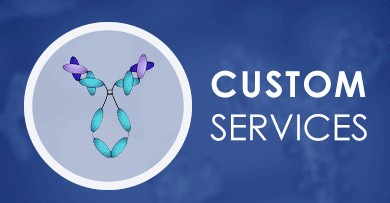+ Filter
 Loading...
Loading...

IAV H5 HA
 Loading...
Loading...Anti-IAV H5 HA Products
- Recombinant Mouse Anti-IAV H5 HA Antibody (VC34) (MRO-1117CQ)
-
- Derivation: Mouse
- Species Reactivity: IAV H5N1
- Type: Mouse antibody
- Application: ELISA
- Recombinant Mouse Anti-IAV H5 HA Antibody (15A6) (MRO-1118CQ)
-
- Derivation: Mouse
- Species Reactivity: IAV H5N1
- Type: Mouse antibody
- Application: ELISA
- Human Anti-IAV H5 HA Antibody (clone HA1-10), mRNA (MRO-257LC-mRNA)
-
- Species Reactivity: Influenza A virus
- Human Anti-IAV H5 HA Antibody (clone Yu22-6), mRNA (MRO-258LC-mRNA)
-
- Species Reactivity: Influenza A virus
- Human Anti-IAV H5 HA Antibody (clone Yu22-8), mRNA (MRO-259LC-mRNA)
-
- Species Reactivity: Influenza A virus
- Human Anti-IAV H5 HA Antibody (clone S2K2-42), mRNA (MRO-260LC-mRNA)
-
- Species Reactivity: Influenza A virus
- Human Anti-IAV H5 HA Antibody (clone Y1121-29), mRNA (MRO-267LC-mRNA)
-
- Species Reactivity: Influenza A virus
- Human Anti-IAV H5 HA Antibody (clone H1202-34), mRNA (MRO-261LC-mRNA)
-
- Species Reactivity: Influenza A virus
- Human Anti-IAV H5 HA Antibody (clone H1124-38), mRNA (MRO-262LC-mRNA)
-
- Species Reactivity: Influenza A virus
- Human Anti-IAV H5 HA Antibody (clone H1126-08), mRNA (MRO-263LC-mRNA)
-
- Species Reactivity: Influenza A virus
- Human Anti-IAV H5 HA Antibody (clone H1213-21), mRNA (MRO-264LC-mRNA)
-
- Species Reactivity: Influenza A virus
- Human Anti-IAV H5 HA Antibody (clone H1108-18), mRNA (MRO-265LC-mRNA)
-
- Species Reactivity: Influenza A virus
- Human Anti-IAV H5 HA Antibody (clone H1121-37), mRNA (MRO-266LC-mRNA)
-
- Species Reactivity: Influenza A virus
View More Products
Can't find the products you're looking for? Try to filter in the left sidebar.Filter By Tag
More Infomation
Our customer service representatives are available 24 hours a day, from Monday to Sunday. Contact Us
For Research Use Only. Not For Clinical Use.
Background
Influenza A virus causes influenza in birds and some mammals, and is the only species of influenza virus A. Influenza virus A is a genus of the Orthomyxoviridae family of viruses. Strains of all subtypes of influenza A virus have been isolated from wild birds, although disease is uncommon. Some isolates of influenza A virus cause severe disease both in domestic poultry and, rarely, in humans. Occasionally, viruses are transmitted from wild aquatic birds to domestic poultry, and this may cause an outbreak or give rise to human influenza pandemics. Influenza A viruses are negative-sense, single-stranded, segmented RNA viruses. The several subtypes are labeled according to an H number (for the type of hemagglutinin) and an N number (for the type of neuraminidase). There are 18 different known H antigens (H1 to H18) and 11 different known N antigens (N1 to N11). H17 was isolated from fruit bats in 2012. H18N11 was discovered in a Peruvian bat in 2013. Each virus subtype has mutated into a variety of strains with differing pathogenic profiles; some are pathogenic to one species but not others, some are pathogenic to multiple species. A filtered and purified influenza A vaccine for humans has been developed, and many countries have stockpiled it to allow a quick administration to the population in the event of an avian influenza pandemic. Avian influenza is sometimes called avian flu, and colloquially, bird flu. In 2011, researchers reported the discovery of an antibody effective against all types of the influenza A virus. Influenza haemagglutinin is a glycoprotein found on the surface of influenza viruses. It is responsible for binding the virus to cells with sialic acid on the membranes, such as cells in the upper respiratory tract or erythrocytes. It is also responsible for the fusion of the viral envelope with the endosome membrane, after the pH has been reduced. The name "hemagglutinin" comes from the protein's ability to cause red blood cells to clump together in vitro. Influenza haemagglutinin is a glycoprotein found on the surface of influenza viruses. It is responsible for binding the virus to cells with sialic acid on the membranes, such as cells in the upper respiratory tract or erythrocytes. It is also responsible for the fusion of the viral envelope with the endosome membrane, after the pH has been reduced. The name "hemagglutinin" comes from the protein's ability to cause red blood cells to clump together in vitro.

